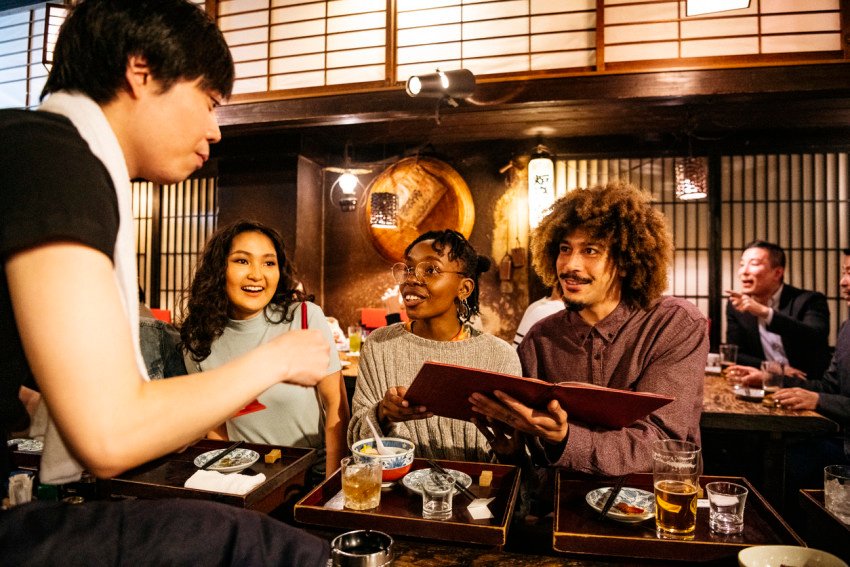Surge in inbound tourists pushes Japan to explore dual pricing
TOKYO – As Japan copes with an influx of tourists driven by the yen’s weakness, a growing number of restaurant and attraction operators are looking at charging foreign visitors more, a development that has sparked concerns it may conflict with how the country wants to market itself.
Two-tiered systems where foreign travelers are charged higher prices than local people have mostly been seen in tourist spots in developing countries, leading to concerns that Japan could end up compromising its image as a high-end tourist destination.
But some businesses and entities have argued that the dual-price system is not meant to “rip off” visitors but done out of “urgent necessity,” citing rising labor and other costs as tourists numbers swell.
“How can we set the same menu price for local Japanese-speaking people and for foreign tourists, who require special assistance in English?” said Shogo Yonemitsu, owner of buffet-style seafood restaurant Tamatebako, located in the bustling Shibuya district in Tokyo.
Since its opening in April, the restaurant has charged foreign tourists 7,678 yen for an all-you-can-eat and drink seafood buffet for a weekday dinner, while Japanese and foreigners living in Japan can have the same meal for 1,100 yen less.
Yonemitsu said the restaurant has had to hike wages to hire English-speaking staff and also faces costs training them to serve foreign customers.
“Given that we have 100 to 150 customers a day while the restaurant has 35-seat capacity, every second is like a war. No matter how we do it, it takes more time to attend to a foreign customer such as to explain how the buffet works, how to grill and eat the food, all in English,” Yonemitsu said.
Tamatebako’s approach is also about retaining local customers, Yonemitsu said, noting they still account for 80 percent of those who walk through the door.
“I think imposing the extra costs created by foreign tourists onto locals would be unfair,” he said on why he has avoided raising overall menu prices for all, as some other operators have done.
A Japanese woman who works at a Thai restaurant in Tokyo and visited the restaurant with three colleagues from the Southeast Asian country welcomed the system, calling it a “good deal.”
“Given the alarmingly weak yen, I think it doesn’t hurt to take a little more from foreigners,” the woman said.
“I heard from my colleagues that such dual pricing is seen in Thailand’s temples. We were saying, ah, at last Japan has become such a country (in charging more for foreigners),” she added.
Operators of popular tourist spots in Japan are also weighing the option of charging foreign tourists more as the influx pushes up maintenance and refurbishment fees.
The mayor of Himeji recently said the western Japan city is contemplating “quadrupling” entry fees exclusively for foreign tourists visiting Himeji Castle, a UNESCO World Heritage site, in response to increasing inbound tourism.
The admission fee for the castle, also a national treasure with part of its wooden structure dating back to the early 17th century, is currently set at 1,000 yen for those aged over 18.
But the mayor said the city would like to charge around $30 for foreigners and around $5 for residents. He said while too many visitors could damage the castle’s upkeep, he wants to avoid raising the admission fee for locals, who see the castle as “a place of rest.”
The Osaka prefectural government is also holding discussions on introducing a tax specifically targeting foreign visitors, possibly around the start of the World Exposition in western Japan in April 2025, to fund measures to manage a surge in tourists.
Experts say businesses and attraction operators who charge foreign tourists more should be careful to explain their reasoning and vision.
“Abruptly changing the price due to a short-sighted thinking that foreigners can afford it on the back of the yen’s fall could invite skepticism,” said Tomoya Umekawa, professor at Kokugakuin University, who specializes in tourism policy.
“Operators, if they need to raise prices due to the higher costs in attending to foreigners, should promote services in a way that would convince travelers it is worth the price,” such as by adding “special and authentic experiences,” he said.
A survey on dual-pricing for inbound travelers to Japan, conducted by loyalty point service provider Loyalty Marketing Inc. in February showed that nearly 60 percent of respondents in the country agreed or somewhat agreed to the two-tier system.
But the survey also showed that over half of the respondents were concerned about the negative influence the system could have on inbound travelers.
In a free response section of the survey, respondents called for value-added services if foreign tourists are to be charged more, such as offering services in various languages, guides, enhanced hospitality or special gifts.
Nick Sakellariou, who was visiting Japan from Sweden, said he supports the idea of charging tourists more at a time travelers are visiting Japan at a high pace.
“Tourists, up to a certain level, it’s good, but when it’s too many, it can be a problem,” said Sakellariou, while suggesting that the dual-pricing could be introduced depending on the time of the year such as during the high season.
But he also suggested that if the system were introduced in his home country, it would be criticized as “racist” or “discriminatory.”
Other foreign tourist destinations that differentiate between locals and visitors include the Diamond Head state park in Hawaii, where state residents can enter for free while foreign tourists and those from other U.S. states are charged. The move created little outcry.
Price-setting strategies in tourism are now at a crossroads, Kokugakuin University’s Umekawa said, urging businesses and operators to depart from the mindset that they need to keep prices low and offer the same services to both Japanese and non-Japanese customers.
“They should take pride in offering high-quality hospitality services, where costs are sufficiently covered by tourists,” he said. “Such value-added services are in demand by foreign tourists and would contribute to (increasing) repeat visitors.”
© KYODO

